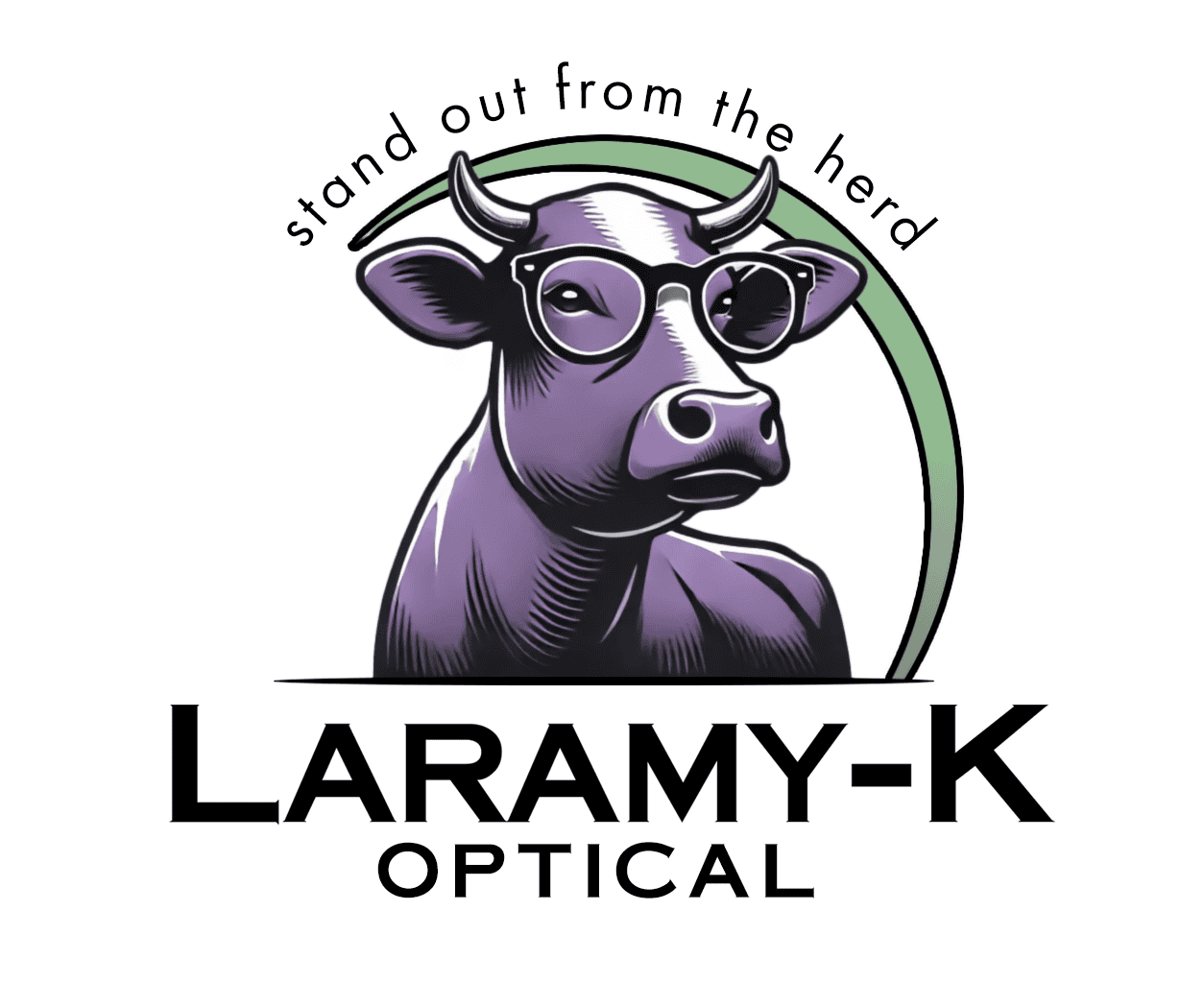Who Needs Progressive Lenses?
Eventually everyone loses the ability to focus on things up close. That near focus ability is know as accommodation. The newspaper becomes more difficult to focus or the fine print on the restaurant menu isn't quite as sharp. They will have to face it, they are becoming a presbyope.
What is Presbyopia?
A presbyope is a person who has presbyopia, an age-related condition where the eye gradually loses the ability to focus on nearby objects. This condition typically begins in middle age, usually around the age of 40 or older. Presbyopia occurs due to the hardening of the lens inside the eye, which makes it less flexible and less able to change shape to focus on close-up objects. It's a natural part of the aging process and affects virtually everyone to some degree as they age.
Symptoms of presbyopia include difficulty reading small print, needing to hold reading materials at arm's length, eye strain, and headaches when doing close-up work. The most common remedy for presbyopia is the use of reading glasses, bifocals, progressive lenses, or multifocal contact lenses, which help compensate for the diminished focusing ability.
When it comes time to visit their vision specialist, you will tell them that they require a variable focus form of correction because their prescription requirements for distance vision are divergent from those required for reading. Typically, this would mean bifocals or even trifocals depending on the specifics of your patient's needs. The first time you recommend bifocals, you can almost hear what they are thinking "Oh my, now I am getting old!" The cosmetic issues associated with bifocals or trifocals are more profound than any other spectacle aesthetics issue. These lenses, with their seg lines, are deeply associated with age. There must be a way to correct the vision of these patients without advertising to everyone their special needs.
What Are Progressive Lenses?
Progressive Addition Lenses (PALs) address the need for variable vision correction that comes as a result of presbyopia with a form of aspheric lens design. By combining curves, they blend differing optical zones together to provide specific power corrections in different areas of the lens. A progressive possesses an intermediate corridor 10-20 mm in length that runs vertically down the optical center of the lens. The bottom portion of this corridor is the reading power of the lens (used for near focus). The top of the corridor and above holds the distance and intermediate vision zones of the lens. The corridor is designed to gradually shift the eye from one power to the next over the length of the corridor as the eye would normally move from looking ahead in traffic to glancing down at the instrument panel of the car. The longer the corridor, the more gradual the transition. This is all accomplished without the obvious lines dividing the various zones.
Progressive Lenses vs Single Vision Lenses
What Are Single Vision Lenses?
Single vision lenses have a uniform prescription across the entire lens. They are designed to correct a single field of vision, which could be for nearsightedness (myopia), farsightedness (hyperopia), or astigmatism. This singular focus makes them straightforward and easy to adapt to, as the lens power is consistent throughout. They are typically the go-to choice for individuals who require vision correction for either distance or near tasks, but not both simultaneously. Due to their simplicity in design and manufacturing, single vision lenses are generally more affordable.
What Is The Difference Between Progressive Lenses and Single Vision Lenses?
In contrast, progressive lenses are an innovative solution for presbyopia, a common age-related condition where the eye's lens loses its elasticity, making it challenging to focus on close-up objects. Progressive lenses are multifocal but without the visible lines found in traditional bifocals or trifocals. They offer a seamless transition between multiple lens powers for different viewing distances - near, intermediate, and distance. The top portion of a progressive lens usually contains the distance prescription, which gradually shifts to intermediate and then near prescriptions towards the bottom of the lens. This gradient allows for clear vision at all distances, catering to the varied needs of daily activities like reading, using a computer, or driving.
However, this complexity means that progressive lenses can take some time to get used to. Users often need to learn how to look through different parts of the lens for different tasks, which can be a bit disorienting initially. The precise positioning of the lens in the frame and the quality of the lens design also play crucial roles in ensuring comfort and ease of use. Consequently, progressive lenses are typically more expensive than single vision lenses, reflecting their advanced design and the technology used in their manufacturing.
Progressive Lenses vs Bifocal and Trifocal Lenses
Progressive lenses, bifocals, and trifocals are all multifocal eyewear options designed to correct presbyopia, a vision condition that typically emerges in middle age. While they serve a similar purpose, their designs, visual experiences, and aesthetics vary significantly, making each suitable for different user preferences and needs.
Progressive lenses are often seen as the most technologically advanced option among these choices. They provide a seamless transition between different focal lengths, catering to near, intermediate, and distance vision without any visible lines on the lenses. This gradation in lens power offers a more natural visual experience, as it closely mimics the eye's natural accommodation process. For instance, a person can look up to see in the distance, look straight ahead for computer work, and glance downwards for reading or close-up tasks. However, this sophistication comes with a need for adaptation, as wearers must learn to navigate different viewing areas within the lens. Aesthetically, progressives are preferred by many for their line-free, youthful appearance. They are typically the most expensive option due to their complex design and manufacturing process.
What Is The Difference Between A Progressive Lens and A Bifocal Lens?
Bifocal lenses, a more traditional option, are divided into two distinct sections with a visible line – the upper part for distance vision and the lower segment for near vision. This clear demarcation simplifies adaptation, but it also means a sudden jump in focus when shifting gaze from one zone to another, which some users find disconcerting. Bifocals don't typically cater to intermediate vision, which can be a drawback for activities like using a computer. The visible line on the lens is less aesthetically pleasing to some, as it is often associated with older age.
What is the Difference Between A Progressive Lens and A Trifocal Lens?
Trifocal lenses take bifocals a step further by adding an intermediate zone, typically for computer use, between the near and distance segments. Like bifocals, trifocals have visible lines separating each viewing area, which can be visually jarring but useful for those who prefer clearly defined zones for different visual tasks. Trifocals are often considered a middle ground between bifocals and progressives, both in terms of functionality and price.
In essence, while bifocals and trifocals provide clear solutions with distinct visual zones, progressive lenses offer a more seamless and aesthetically pleasing experience that closely mirrors natural vision. The choice between these lenses should be guided by the user's specific visual requirements, comfort with adaptation, and aesthetic preferences. For those seeking a modern solution without visible lines and with the convenience of accommodating multiple visual needs in one lens, progressive lenses are the ideal choice.
Why Do Progressive Lenses Have "Blurry" Peripheral Areas?
The only real downside to progressives is that these various optical zones have to meet somewhere and resolving their differing powers has been subject to much scrutiny. In all cases, progressives possess a degree of astigmatic error (distortion) down either side of the progressive corridor. There are many available technologies and types of progressives such as freeform lenses and Camber lens technology, each an effort to address the need to maximize the useable area of the lens and diminish the innate "blurry" areas which cannot be used. The distortions found between these zones play a significant role in the ability of the average patient to adapt to the routine use of progressive lenses. A competent dispenser will know how to use these technologies to achieve the best result based on patient need. Of course an independent wholesale lab like Laramy-K can be a significant resource as well.
How to Adapt to Progressive Lenses
The ability of a patient to adapt to the use of PALs encompasses many issues above and beyond the particular style of the PAL prescribed. One of the most key issues is patient selection. Most patients adapt very well, but progressives aren't necessarily for every presbyope who walks through the door. PALs are not recommended to patients who are satisfied with their current multifocal lenses and have no interest in cosmetics, or those who have a history of poor adaptability. Many progressives are not available for add powers greater than 3.5D, as this patient segment is often not appropriate. The best candidates for use of progressives are new presbyopes who are confronting their first run at multifocal lenses. These patients are usually interested in avoiding seg lines and are often quite motivated. Additionally, due to the minimal add power requirements of a new presbyope, distortion is minimal and adaptation in fairly easy. Once adapted, increased add powers down the road are more readily accepted. Probably the most important factor in successfully fitting a progressive is ensuring that the patient had realistic expectations about their vision with this new lens style. Knowing the advantages and disadvantages up-front will go a long way toward heightened motivation and ease of adaptation.

